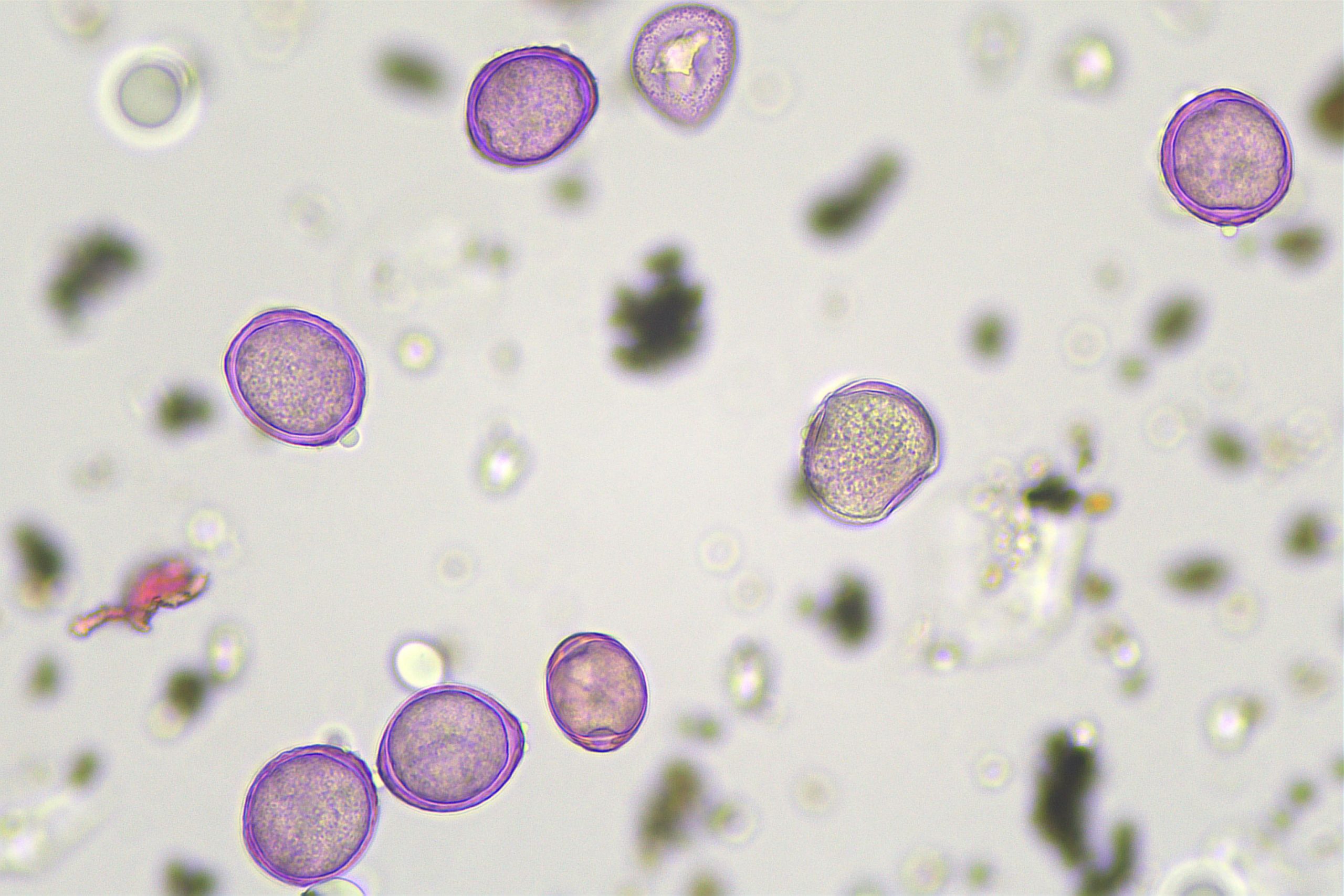Spring Pollen Season 2022
The spring pollen season is upon us, with the pollen count going over 500 for the first time this year on April 11th. So now is a great time to provide some perspective on the tree pollen seasons in southeastern Wisconsin.
But first, an anecdote. Tree pollen allergy sufferers have long noticed that they itch and sneeze on unseasonably warm days in early spring but feel fine after the temperatures drop. We've theorized that pollen must be brought up from southern states on the warm, southerly winds on those days - then, once the winds change and come out of the north again, the pollen is gone. This year, we finally had a chance to prove it! We heard about the record-breaking warmth on March 5th a couple of days in advance and had an opportunity to get our pollen trap up on the roof early this year since the snow was gone - and sure enough, pollen was in the air! Fox6News covered the story for their viewers here , showing a photomicrograph we had taken of the pollen we collected. The part that really drove home the fact that pollen can travel hundreds of miles came from finding a grass pollen grain on our slide. We reviewed the data for that day from the National Allergy Bureau from around the country. Granted, not every pollen station had started counting that early in March, but the closest pollen stations we could find that reported grass pollen that week were in Marietta, Georgia, and Greenville, South Carolina!
We're off to an average start this year. Our pollen count reaches 500 in mid-April roughly one-third of the time. In the last 25 years, the first day over 500 occurred between April 7th and April 16th eight times - the earliest was on March 14th in 2012, and the latest date the tree pollen count reached 500 was on April 27th in 2009. But things will likely go downhill quickly. Research in greenhouses has shown that plants pollinate longer and produce more pollen per plant as average temperatures increase. Unfortunately for allergy sufferers, we see that in the great outdoors as well. To show trends, we averaged the data every five years going back to 1998 to reduce the effects of weather conditions. For example, rain washes pollen out of the air so that a wet spring will have lower pollen counts. Trees pollinate every year but can't start until it's warm enough, so if winter lasts so long that the tree season is short, the maximum pollen count goes up. But considerable variations from year to year disappear when we average five years at a time.
The story told by these numbers is compelling. The length of the tree pollen season has increased by almost three weeks, from 69 days twenty-five years ago to 88 days in the past few years. The average maximum tree pollen count has more than doubled, from 1,248 grains per cubic meter of air to 2,913. The average daily count has increased 36%, from 245 to 332. A higher average count for more days means more exposure to airborne pollen and more suffering.
But we're here to help. We've led the charge to develop telemedicine solutions and are now able to accommodate new patient consultations within a week - often the next day! This has been an important goal because, by the time people come to the allergist, they're usually miserable and don't want to wait months to get help. We can often start a treatment program right away, but if we decide together that further testing is needed to optimize your treatment plan, in-person testing appointments are then scheduled without delay. Your quality of life is our greatest concern, so if your allergies hold you back from doing the things you want to do, please give us a call!


